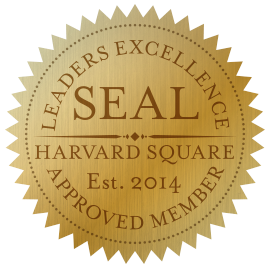This month, we’re excited to present an exclusive recorded webinar, Transformative Marketing: Combining New Age Technologies and Human Insights, featuring renowned marketing experts Philip Kotler and V. Kumar.
In this insightful session, they shared cutting-edge strategies for navigating shifts in customer behavior and leveraging innovative technologies to accelerate business growth. You’ll discover how to integrate diverse data sources, apply Marketing 5.0 principles, and deploy advanced techniques to gain deeper customer insights.
The speakers, Philip Kotler, Professor Emeritus of International Marketing at Northwestern University’s Kellogg School, and V. Kumar, a marketing professor at Brock University, are both recognized as legends in the field of marketing. Kotler, who holds a PhD from MIT, is a prolific author of over 90 books and 170 articles, including Marketing Management. Kumar, who earned his PhD from the University of Texas, has authored 35 books and over 300 papers.
Q&A from the Webinar: Expert Insights from Philip Kotler and V. Kumar
During the live webinar, we received many thought-provoking questions. Unfortunately, we didn’t have time to address them all during the event, but we’ve compiled those unanswered questions below, now answered by Philip Kotler and V. Kumar.
Please scroll down to explore these expert responses and deepen your understanding of transformative marketing strategies.
How are the core principles of marketing evolving conceptually, beyond the implementation of new technologies? Are we witnessing a fundamental shift in the essence of marketing, or is it more about the application of modern tools to traditional concepts?
There has been and is continuing to see some fundamental shifts in the essence of Marketing. For example, if you take the 4 P’s, Pricing has evolved to consumers choosing the price, willing to pay a set price or bidding for a certain price. Advertising and Promotions have evolved to personalization and customization. Selling and Distribution has changed to selling and delivering the product as per the social media influence, intelligent recommender systems and convenience of the customer. Product and innovation have gone to relying on customer feedback and customer co-creation and more of continuous innovations than any radical innovation.
In what ways can Artificial Intelligence (AI) introduce new dimensions and variables to the marketing mix, beyond automation, by enhancing personalization, targeting, and customer engagement strategies?
AI has given the flexibility to suggest in real time the right product recommendation to the right customer at the right price, and the convenience of having the product delivered through drones when possible. The precision achieved by the AI tools is unmatched. However, the recommendations are also limited to the products sold. The recent developments in Gen AI capabilities can go beyond the existing products and suggest something novel. For example, if someone wants to go on a vacation, Gen AI can customize a package within the stated budget and the stated number of days. This, the reliance on Gen AI will help to deliver better experience.
What are the most impactful transformative marketing tools specifically tailored to service-based industries (e.g., consulting, financial management, investment banking)? How do these tools differentiate themselves in such high-touch sectors?
FinTech world has evolved rapidly and there are AI tools and Gen AI applications (not naming them here to avoid any biases) to provide financial advice, generate consulting reports, and provide guidance on options trading and investment portfolio. Based on customer feedback, the AI tools are recalibrated and constantly being refined to improve the matching of the customer needs and recommendation accuracy.
Which AI-powered tools and platforms can effectively transform existing educational science videos into more interactive, immersive, and visually engaging audiovisual experiences for learners?
Education Industry can gain a lot by using AI (e.g., Chatbots), Gen AI (e.g., ChatGPT 4.0), Metaverse (e.g., for immersive experiences in the world of planets, universe). Beyond classroom education, one can experience visiting places, playing sports, and conversing with an expert). The curriculum has to evolve to integrate the new age technologies, and this needs investments in technology, teacher training, and most importantly overcoming resistance to adoption of immersive technologies by the key stakeholders (e.g., students, teachers, and the parents).
As personalization and customer experience become paramount in marketing, how can businesses strike a balance between using advanced technologies for efficiency and preserving authentic human connections with consumers?
The combination of AI and human insights results in Augmented Intelligence. Most importantly, in areas where data privacy is violated or biases introduced by the AI, human interventions can intervene and resolve problem areas. If a resume screened by an AI tool only chooses men (based on past hiring practices) for job interviews, then human intervention can detect that and include more women in the interview process.
How can businesses ensure that transformative marketing strategies powered by AI and advanced technologies are trustworthy, transparent, and free from bias, ensuring customer confidence and ethical integrity?
Based on our forthcoming paper (V. Kumar, Phil Kotler, Shaphali Gupta and Bharath Rajan) titled: “Gen AI in Marketing: Prospects, Perils and Policy Implications”, in the Journal of Public Policy & Marketing, we showcase the following examples for designing marketing-mix strategies:
Bases on the type of Gen AI tools used (GPT models; Transformer models such as Bidirectional Encoder Representations from Transformers (BERT); XLNet; Conditional transformer language model; Text-to-text transfer; DALL-E) and human intervention, any concerns or biases can be addressed.
Product: Toyota’s GAI text-to-image feature generates prototype images of their electric vehicle models (Dreibelbis 2023).
Price: Uber Freight’s GAI tool helps shippers access on-demand insights using natural language and ask questions about their journey and transit queries (Uber Freight 2023).
Place: Wendy’s GAI tool improves drive-thru ordering by quickly handling customer questions and accurately processing food orders, even if the items are described differently than on the menu (Spessard 2023).
Promotion: The Fashion Innovation Agency uses AI to transform fashion shows and catwalks using tools like Midjourney and Stable Diffusion. This technology allows them to create captivating looks for a model (Zwieglinska 2023).
We find that the promises of Gen AI to society include wealth creation, expanded access to information to a wider audience, instilling a process of continuous learning, ensuring smarter living, and presenting a way to improve personal wellness. All these are made possible by businesses that harness GAI for innovation, efficiency, and promoting creativity.
In today’s fast-evolving digital landscape, how do you foresee the core principles of marketing transforming over the next decade? What strategic shifts should marketers focus on to maintain relevance in this dynamic environment?
Marketing must move from customer obsession to stakeholder obsession. A company has to present strong rewards to its employees, distributors and suppliers for the customer to be truly satisfied.
What are the ethical implications of autonomous marketing systems as they increasingly take over decision-making processes? How should marketers approach issues of transparency, responsibility, and consumer privacy in this context?
Any autonomous marketing system must designate at least one human partner who watches its performance. If the performance is disappointing or violates ethical concerns, the human partner can terminate its operation and replace it with human operation.
As marketing undergoes a transformative phase with advanced technologies, what challenges do industry leaders like Professors Kotler and Kumar foresee? How can companies prevent the erosion of human-to-human (H2H) connections in the era of automation and AI-driven marketing?
We capture this in our book on Transformative Marketing. So please read the book…
What are the key performance indicators (KPIs) and metrics that businesses should track to effectively measure the success of their transformative marketing efforts, especially in a data-driven landscape?
The KPIs do not differ from matching to a company’s goals. Now the focus is on value creation and value appropriation. These two tasks can be done efficiently by the new age technologies.
If a client has suffered financial losses due to failed AI-based marketing or online strategies, how can businesses rebuild trust and ensure that future marketing approaches deliver reliable, measurable results, regardless of the market or country?
The recommendations are always only advisory.
What emerging consumer behavior trends should marketers focus on when developing transformative marketing strategies to ensure they stay ahead of the curve?
More consumers are factoring into their brand choice behavior two concerns: the healthfulness of the product and the environmental impact of the company’s product and production process. For example, the company can use GenAI to assess whether these two concerns are properly handled in the marketing plan and desired outcomes.
What specific challenges and risks are marketers likely to face with the rise of new-age technologies such as Natural Language Processing (NLP) and AI-driven decision-making?
Natural Language Processing must especially be reviewed for several types of unintended biases or untruthful “facts” that could undermine NLP’s usefulness.
What might Marketing 7.0 look like in the future? Can we anticipate the next evolutionary step in marketing, and how will it reshape the relationship between brands and consumers?
Human vs Machines will become Human and Machines in Marketing 7.0. With AI and 3D printing capabilities, customers will make their own products, and service robots will become a companion for all.




